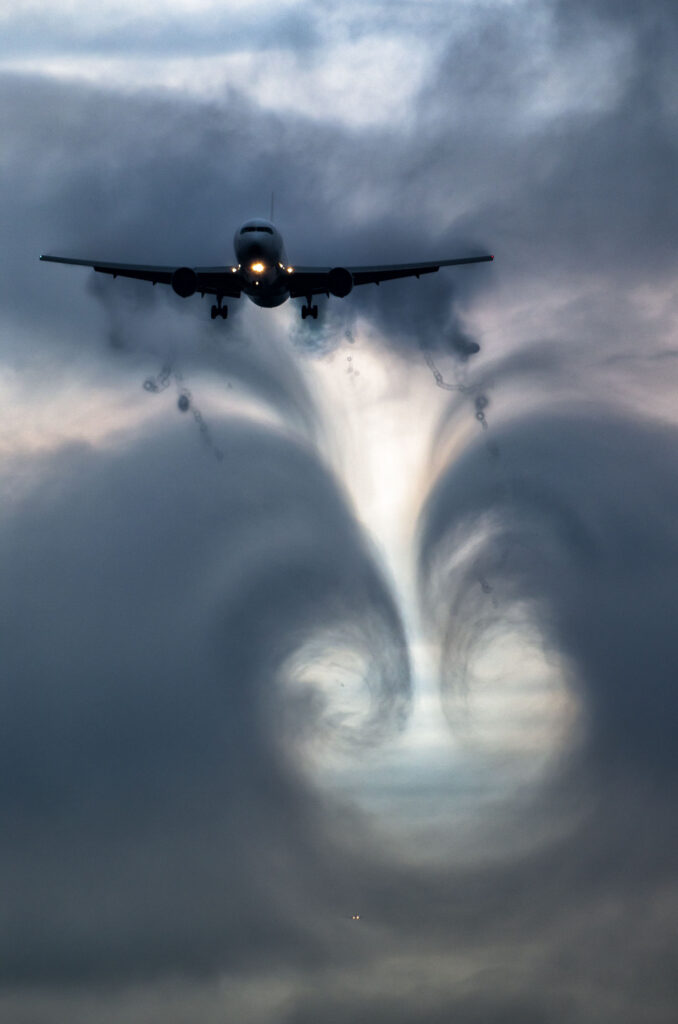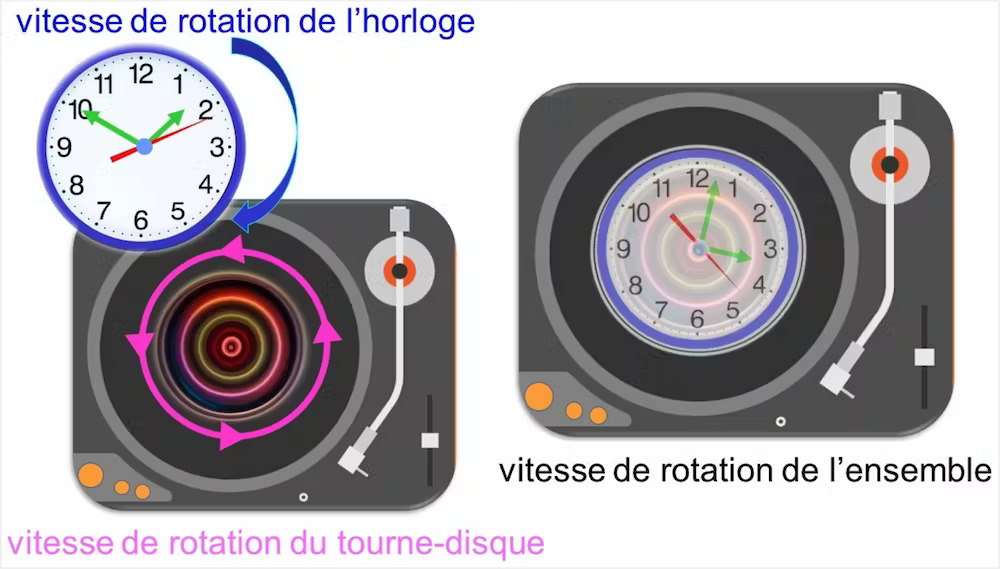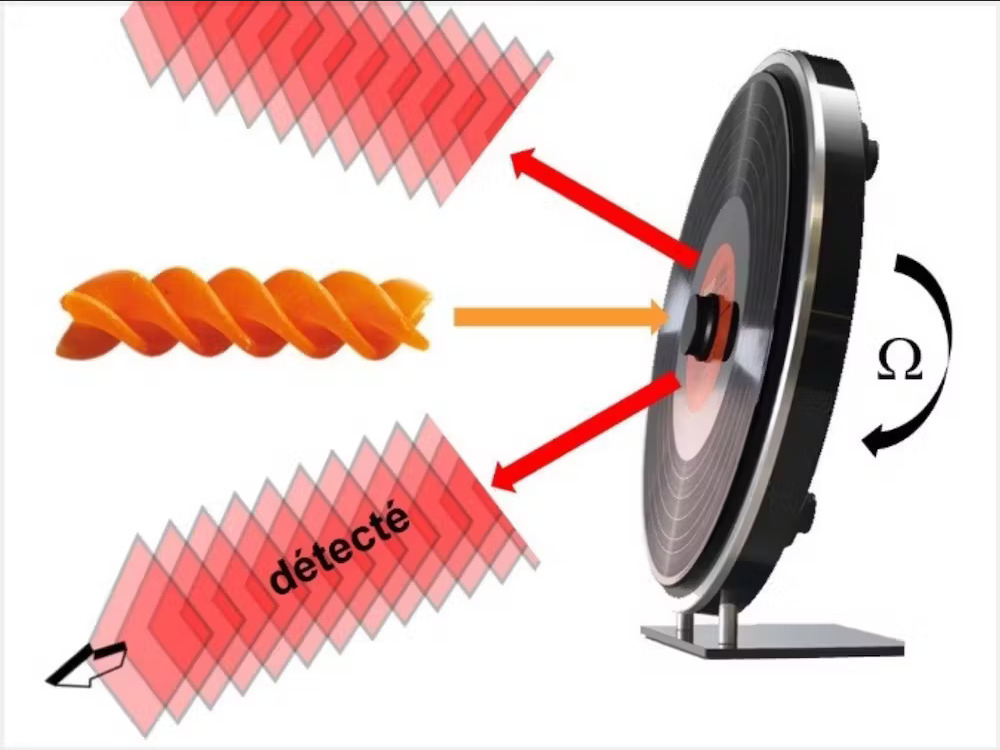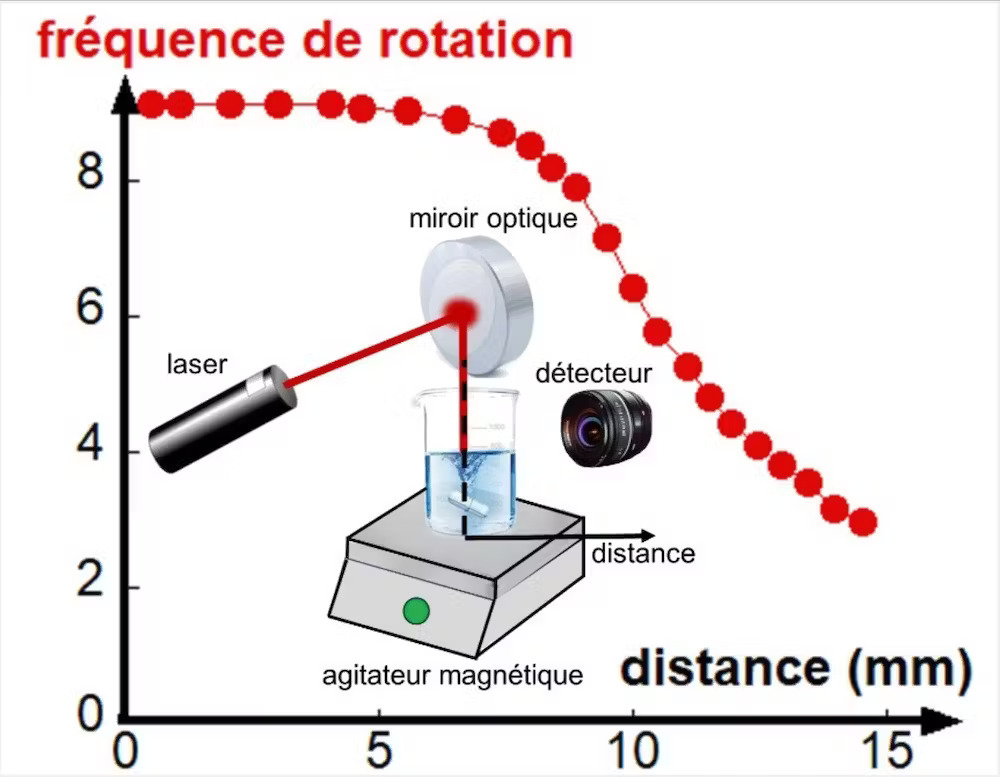Wake turbulence is sometimes visible due to condensation of water vapor. Sometimes involved in air accidents, these phenomena could be detected and avoided using lasers.
In November 2001, an American Airlines Airbus A300 departing from New York crashed two minutes after takeoff, killing all 260 people on board. It was shortly after the World Trade Center aerial attacks, but this time, the accident had very different causes: wake turbulence, that is to say strong swirling structures generated by the passage of planes , that day created by a Japan Airlines Boeing 747 which had taken off shortly before.
More recently, a Bombardier Challenger 604 business jet fell from 3,000 meters in the wake of an A380. Several passengers were injured and the interior of the plane was destroyed. Although minor incidents are quite frequent (one per month), serious accidents occur on average every two years.
In addition to being responsible for several air disasters, they are a hindrance to air development. Indeed, in order to limit their effects, an arbitrary safety delay is imposed between each plane taking off and landing. A minimum safety distance must also be respected in flight – a distance that Maverick and Goose probably did not respect in Top Gunthus losing control of their F-14.

Directly detecting these wake turbulences and their evolution could make it possible to considerably reduce these delays and distances, and to optimize the use of airport runways – reinforcing aviation safety and reducing operating costs.
Unfortunately, being able to completely characterize an eddy, especially a gaseous eddy, is quite difficult.
If, in the fictional register, the tornado chasers of Twisters had to sacrifice a car, at the risk of their lives, so that marbles could be sucked up by the tornado and thus allow, through their electromagnetic echo, to completely characterize the tornado, in reality, it is planes with a crew which will collect information at the heart of depressions, in obviously very difficult conditions.
To avoid these dangers, we are seeking to develop a device capable of remotely probing these vortices. Such a device could also be of interest for astronautics, in meteorology, but also for characterizing the wakes of wind turbines, which are so dangerous for birds and which can extend over several hundred meters.
In our recent study, we propose to exploit a physical phenomenon, the rotational Doppler effect, to measure the speed and evolution of these vortices. This could be done at relatively low cost since it requires the use of a simple laser and a detector, and would be adaptable to the wakes of wind turbines and the measurement of tornadoes.
What is the rotational Doppler effect?
The “usual” Doppler effect relates to the frequency shift of a wave (acoustic or electromagnetic) when the transmitter and receiver are moving relative to each other. This shift is proportional to the relative speed between them. It is used in particular to detect speeding by the police, using radio or optical waves. It is also used in medicine, among other things, to measure flow in blood vessels, this time using an acoustic wave.
There is also a rotational Doppler effect, less known, which is the counterpart of the usual Doppler effect for rotating objects.
Philéas Fogg saw this clearly in Around the world in eighty days. Indeed, the period of the journey, normally 80 days, was modified by the Earth’s own rotation. Depending on the direction of travel around the world, this period increases to 79 or 81 days.
This can also be understood, at shorter times, by looking at a clock placed on a rotating record player. The clock does not run at the same speed if you stand on the record player or in the room in which the record player is placed.


To be able to use the rotational Doppler effect with waves, they must “rotate”. This is not the case with usual (plane) waves.
On the other hand, there are waves that resemble Italian “fusilli” pasta, and which rotate at a speed proportional to the frequency of the wave. They are called orbital angular momentum waves or OAM in English.
Light backscattered by rotating objects no longer rotates. It no longer has the shape of a fusilli. In addition, it is found to be shifted in frequency by an amount proportional to the rotation frequency of the object and the characteristics of the “fusilli”. By measuring this offset, it is possible to measure the rotation speed of the vortex.


Remotely probe eddies
Our team has been working for several years on “fusilli” waves, on their generation, their detection and their use to rotate objects using light.
We recently succeeded in completely characterizing a “model” liquid vortex generated by a magnetic stirrer in a container, using rifle-shaped optical waves generated by a laser, and studying the frequency of light scattered by the water in the container. whirlwind.


In particular, we measured the distribution of angular velocities inside the vortex and, at the same time, we can perform mapping along the vortex axis. In other words, we can know the distribution of rotational speeds of the vortex in three dimensions.
Currently, we are trying to repeat this experiment on a gas swirl generated by a depression, in the laboratory, before carrying out these experiments in a real situation.


Olivier Emile, Professor and researcher in physics and Janine Emile, Professor in physics
This article is republished from The Conversation under a Creative Commons license. Read the original article.
Subscribe for free to Artificielles, our newsletter on AI, designed by AIs, verified by Numerama!
